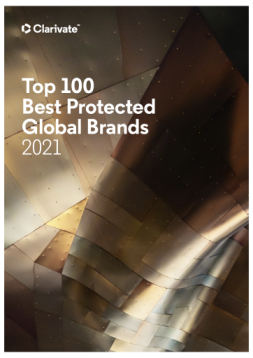BUSINESS
Exploring the Top 100 Best Protected Global Brands
When you start a business, you want to build a brand that people trust because that trust leads to repeated sales. Apart from considering the name of your business, you want to build a brand identity that evokes qualities that customers can connect with and convert to sales. Think of it like meeting a person; the name is your first introduction to the person, but whether you decide to build a long-term friendship with that person depends on many other factors. It’s the same thing with a brand. Your first encounter with a brand is the name, but there are other factors that keep customers loyal to a brand. Whatever it is that draws customers to a brand, once formed, the brand must protect its relationship with present and future customers, which involves managing what is heard and seen about the brand.
So Clarivate published the first ever report on the Top 100 Best Protected Global Brands and I got to sit in on an enlightening conversation about this Report hosted by Red Points and WIPR. Representatives from Pirelli Tyre, Starbucks, and Philips, who made it on this list of distinguished brands. The authors of the Report, Ed White and Robert Reading, also shared some insights about the challenges of brand protection in the age of digital economies.

The Report has been out for a few weeks now, but I think it is worth sharing some of the highlights.
Forty-nine out of the 100 on the list are European brands
Ed White attributed the dominance of the list by European brands, particularly European luxury brands, to Europe’s history. The history of wealth and craftsmanship in Europe has global appeal. For instance, the heritage of French champagne or Swiss chocolates or Italian fashion.
Public relations is key to brand protection – Think of the past couple of years and the effect that the news and social media have had on some brands. No brand wants bad publicity because the fall out may be very costly for their bottom line. No brand protection strategy is complete without good PR management.
Globalization is both an opportunity and a challenge for brands
As businesses look to expand and tap into new opportunities, they must be mindful of the effect on their brand. Heather Stutz, IP Corporate Counsel at Starbucks, advised that brands looking to expand must always remember the core of their brand and be mindful of being too disparate. In other words, you can’t be all things to all people. It is tempting to want to have your hands in many pies but the only thing you might succeed in doing is confusing consumers and turning them off your brand.
Licensing presents an opportunity for expansion but ultimately, the brand owner is responsible for protecting the brand. For licensing to work, the brand owner must have a well-defined brand persona and licensees must adhere to the brand standards set by the brand owner. Having a brand dress and voice that translates in different markets and cultures is also a challenge for brands trying to expand into other markets.
Businesses must have an adaptable brand protection strategy
For brands like those on this 100 Best list that operate in different markets, brand protection cannot be one-size-fits-all. All countries have different enforcement policies and businesses must adapt their brand protection and brand enforcement strategies to be responsive to the different markets in which they operate. The business must decide whether to use a sledgehammer approach and come down hard on any brand threats on one end or form alliances with brand threats. An adaptable brand strategy will allow for a context-based approach to brand protection.
Brand protection is not cheap! Policing the use of your protected brand elements and enforcing your rights against infringements is expensive. Your business brand protection strategy must factor in what the business can afford to spend on policing and enforcement.
Don’t ignore your digital real estate
The internet has become an important aspect of most businesses, but it also presents a challenge for brand owners. As most people turn to the internet to get information about businesses, managing domain names and social media handles has become an important part of brand protection strategy. No business wants their customers to be misdirected to spaces that do not represent their brand. For some businesses their only interaction with customers will be online, in digital spaces. It is important to protect domain names and social media handles that are core to the business and the brand. This means monitoring the use of domain names and social media handles similar to yours. If the owners of similar domain names and social media handles are operating in the same space as you are, then you might have a problem that you need to address to the survival of your brand and brand identity.
I encourage every small business owner in the process of creating a brand protection strategy to take a close look at some of the brands on this list. You might find the inspiration you need to create your own top brand.
